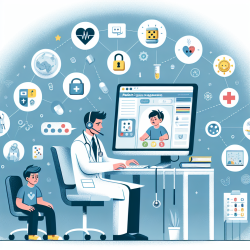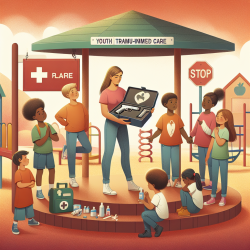As a practitioner dedicated to creating positive outcomes for children, it's crucial to stay informed about the latest research and advancements in treatment methods. The study titled Feasibility of a Randomized Controlled Trial of Paediatric Interdisciplinary Pain Management Using Home-Based Telehealth by Hilyard et al. offers valuable insights into the implementation of telehealth for pediatric pain management. This blog will highlight the key findings and provide actionable steps to enhance your practice.
Study Overview
The study aimed to test the feasibility of a hybrid pediatric interdisciplinary pain program (Hybrid-PIPP) compared to standard care. The Hybrid-PIPP included both face-to-face group therapy sessions and individual videoconference sessions. The objective was to assess the efficacy and cost-effectiveness of this hybrid model.
Key Findings
- Feasibility Criteria Met: The study met predetermined feasibility criteria for staff availability, recruitment rate, treatment completion, and data collection.
- Attendance: The Hybrid-PIPP stream had a superior attendance rate (94%) compared to the Standard Care stream (63%).
- Satisfaction: Both streams had similar global satisfaction ratings, with Hybrid-PIPP scoring slightly higher.
- Challenges Identified: The study highlighted several challenges, including the need for increased intervention intensity and better scheduling efficiency.
Actionable Steps for Practitioners
Based on the study's findings, here are some actionable steps to improve your practice:
1. Embrace Telehealth
Telehealth can significantly improve access to care, especially for children in remote areas. Consider integrating videoconferencing into your treatment plans to provide continuous support without geographical constraints.
2. Increase Intervention Intensity
The study found that the initial workshop's intensity was insufficient for participants with high levels of disability. Consider increasing the number of face-to-face hours and integrating more intensive support sessions.
3. Optimize Scheduling
The Hybrid-PIPP stream's rigid scheduling policy resulted in better attendance compared to the flexible scheduling of the Standard Care stream. Implement a structured schedule to ensure better adherence to treatment plans.
4. Leverage Group Therapy
Group therapy provides positive peer modeling opportunities and social support. Incorporate group sessions into your treatment plans to enhance the therapeutic experience.
5. Utilize Digital Resources
Develop online resources to support learning and leverage clinician time. This can include educational materials, activity charts, and progress tracking tools.
Encouraging Further Research
While the study met its feasibility criteria, it also identified areas that require further research. Practitioners are encouraged to contribute to this growing field by conducting additional studies to refine and optimize telehealth interventions for pediatric pain management.
To read the original research paper, please follow this link: Feasibility of a Randomized Controlled Trial of Paediatric Interdisciplinary Pain Management Using Home-Based Telehealth.










